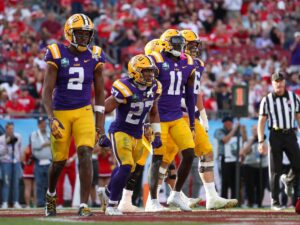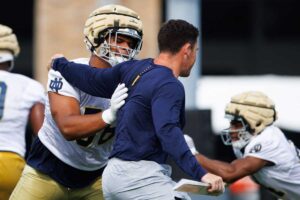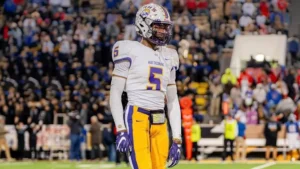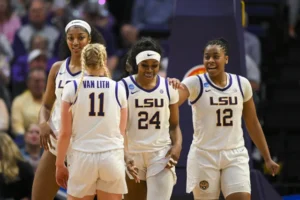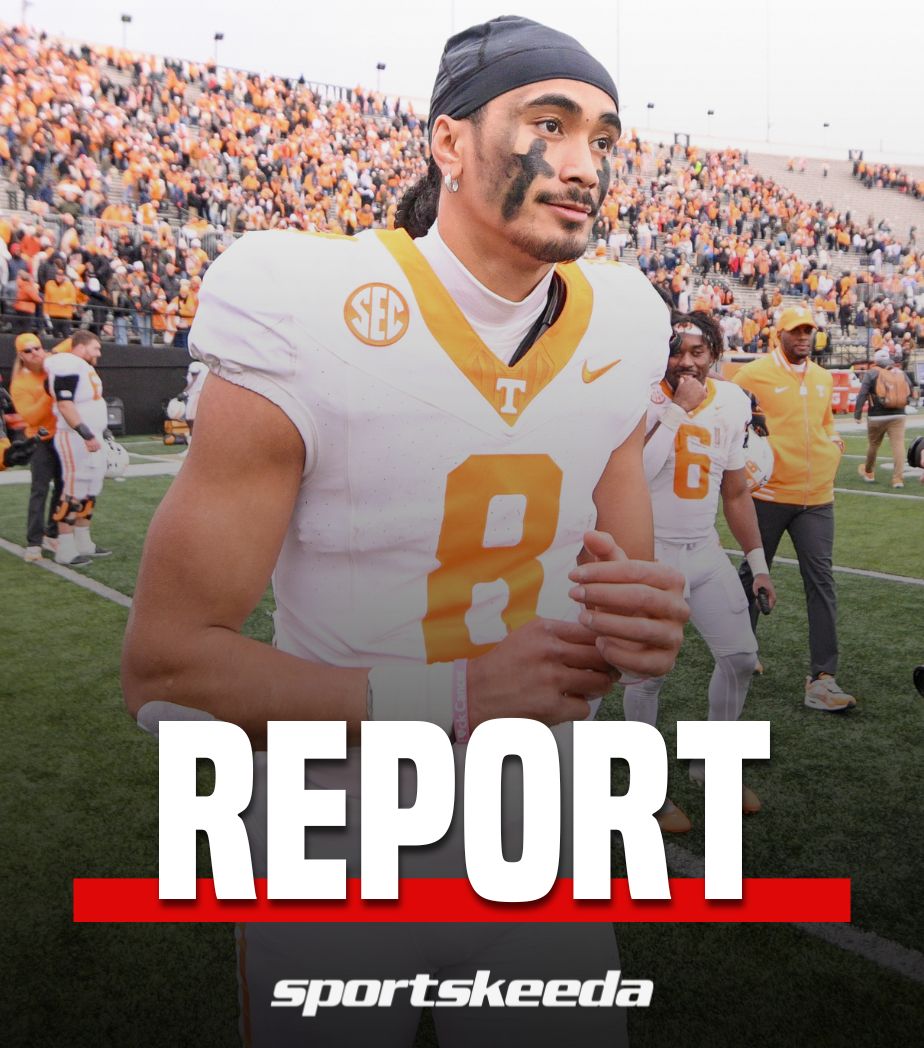
From Millions to Modest: How Taxes Slashed Nico Iamaleava’s NIL Earnings After Signing With UCLA
When Nico Iamaleava made the high-profile move to UCLA, the headlines buzzed with the possibilities. The former five-star quarterback and Tennessee Volunteers signee had become one of the biggest names in college football’s Name, Image, and Likeness (NIL) era. But while fans debated what his arrival in Westwood would mean on the field, few could have predicted the financial twist his move to California would bring.
Initially rumored to be seeking a multi-million dollar NIL deal—reportedly up to $4 million—Iamaleava is now projected to earn just $900,000 after taxes, according to financial projections that have stunned many within the college football community. The harsh reality of income taxation, particularly in a high-tax state like California, has taken a significant bite out of what once seemed like a golden payday for one of the sport’s most hyped quarterbacks.
The Tax Breakdown
Here’s how Iamaleava’s projected NIL earnings were gutted:
-
Federal Income Tax: $617,618
-
California State Income Tax: $210,027
-
Federal Payroll Taxes (FICA): $50,953
-
California State Disability Insurance (SDI) Tax: $1,684
-
Total Taxes: $880,283
If Iamaleava’s NIL earnings came in around $1.78 million before taxes, that tax bill leaves him with just $900,000 in take-home income. That’s still a strong salary for a college student, but it’s a far cry from the multi-million-dollar dreams that dominated the early NIL landscape—and even further removed from the $4 million he reportedly sought while at Tennessee.
A Harsh Reality Check
The numbers tell a cautionary tale not just for Iamaleava, but for every high-profile athlete navigating the NIL era. As schools in states like California, New York, and others with steep income taxes compete for talent, the financial implications for athletes become increasingly complex.
In this case, nearly 50% of Iamaleava’s gross income was eaten up by federal and state taxes. While athletes in the NFL and NBA routinely deal with these realities, college athletes are just now being exposed to the intricacies of the U.S. tax system. And unlike professional athletes, most college stars aren’t equipped with full teams of financial advisors—making it easier for them to be blindsided by the math.
For context, Tennessee is a state with no income tax on wages. Had Iamaleava remained a Volunteer, his overall tax burden could have been significantly lower, even with a similarly structured NIL deal. Some experts estimate that had he signed a $4 million deal in Tennessee, he might have taken home more than $2.5 million—almost three times what he’s now expected to make in California.
The Impact of State Lines
While much of the NIL conversation has focused on deal size, brand partnerships, and athletic performance, the tax landscape is rapidly becoming one of the most overlooked—and most important—factors in recruiting and player movement.
Take two identical NIL deals worth $2 million:
-
In a zero-income tax state like Florida, Texas, or Tennessee, the athlete could take home over $1.3 million after federal taxes and FICA.
-
In California, however, that same deal leaves the athlete with closer to $900,000—or potentially even less depending on how the deal is structured and where services are performed.
Suddenly, that blue-and-gold jersey might not sparkle quite as much when the check hits.
Beyond the Numbers: What It Means for Iamaleava
Iamaleava’s move to UCLA wasn’t just about money. Sources close to his camp have said that the quarterback was looking for a fresh start, better exposure on the West Coast, and the opportunity to compete in a system better suited to his dual-threat skill set. The change in coaching environment, conference alignment, and perhaps proximity to family in California all played roles.
Still, the financial difference is stark. For a player once reportedly pursued with one of the richest NIL offers in college football history, the end result is, comparatively, modest.
At Tennessee, Iamaleava was expected to be the crown jewel of a new era under Josh Heupel—a potential Heisman candidate and future first-round draft pick. But after a season of limited playing time and internal tensions, a mutual parting of ways became inevitable.
At UCLA, he gets a clean slate. But he also gets a state income tax rate that tops 13% for high earners—one of the highest in the nation. For someone earning significant NIL revenue, that percentage hurts.
A Lesson for Athletes and Advisors
Iamaleava’s situation is becoming a case study in how college athletes—and their families—must navigate the financial landscape of NIL with as much scrutiny as the athletic side.
“Location matters more than ever now,” said one NIL consultant. “You could be looking at a difference of hundreds of thousands of dollars in take-home income just based on where you go to school. And these players are often making choices based on relationships or branding opportunities—not tax code.”
What this means is that going forward, athletes will need to treat NIL offers with the same diligence as professional contracts. It’s no longer just about the gross amount—it’s about what ends up in your bank account after Uncle Sam (and your state) take their cut.
Even the structure of deals matters. Athletes receiving payments through LLCs, S-Corps, or other business entities might be able to reduce certain taxes. Those paid directly as individuals face the full brunt of the progressive tax system.
Will the Market Adjust?
Some believe that Iamaleava’s situation could be the tipping point that forces agents, boosters, and collectives to rethink how they present deals to athletes. Instead of touting the raw number, they may need to focus more on net income and tax-friendly environments.
If you’re a quarterback with multiple options, and one school in a zero-income-tax state offers a $2.5 million deal while another in California offers $3 million, the former might end up being the smarter financial play—even if the headline number is smaller.
Expect to see more athletes leaning on financial planners, CPAs, and NIL-specific advisors to help them through the maze. Collectives that build in tax strategy and financial support might gain a recruiting edge as well.
The Road Ahead for Iamaleava
At the end of the day, $900,000 is still a massive sum for a college athlete. But it’s far from the empire-building NIL potential that was once discussed around Iamaleava’s name. And if his UCLA stint goes well and he enters the NFL Draft, the real payday might still be ahead of him.
But for now, Iamaleava’s story serves as a financial wake-up call for college athletes chasing the NIL dream: Not all millions are created equal. And where you choose to play might make all the difference.
As the college football landscape continues to evolve—and more states consider their own approaches to NIL taxation and regulation—one thing is clear: athletes and advisors who understand the tax game will win it. Those who don’t may find that their dream deal wasn’t all it was cracked up to be.
And as for Iamaleava? The spotlight now shifts from the ledger back to the field. If he thrives in Westwood, the taxes may feel like a small price to pay. If not, he’ll be a cautionary tale for the next generation of NIL stars navigating the fine print of fame.
